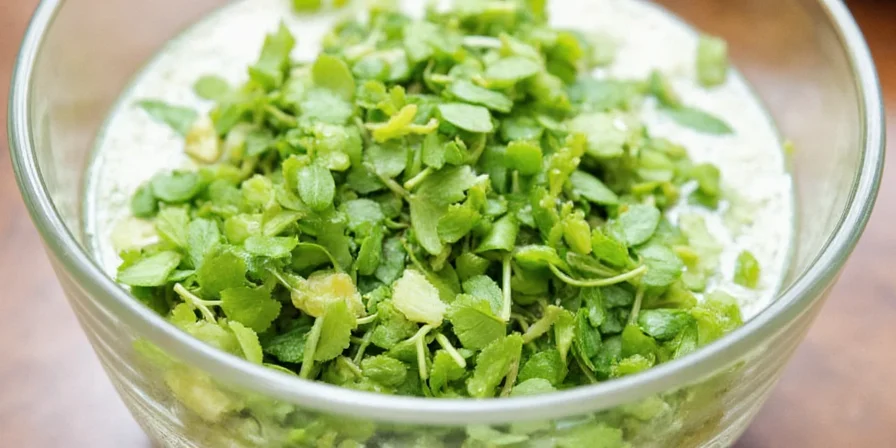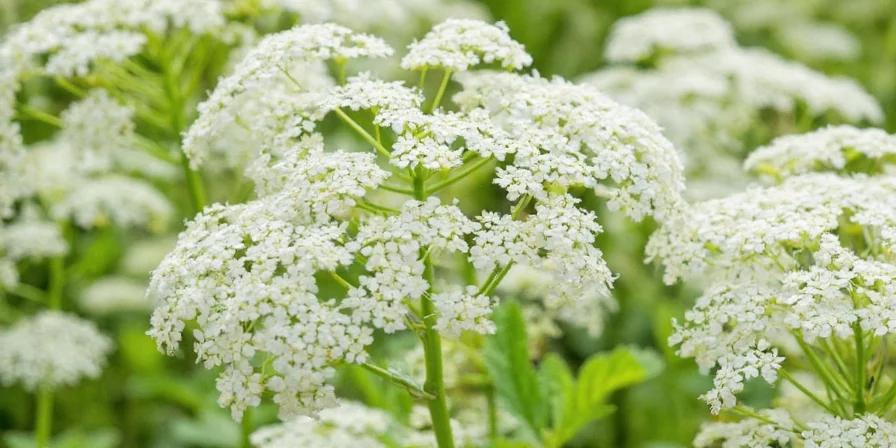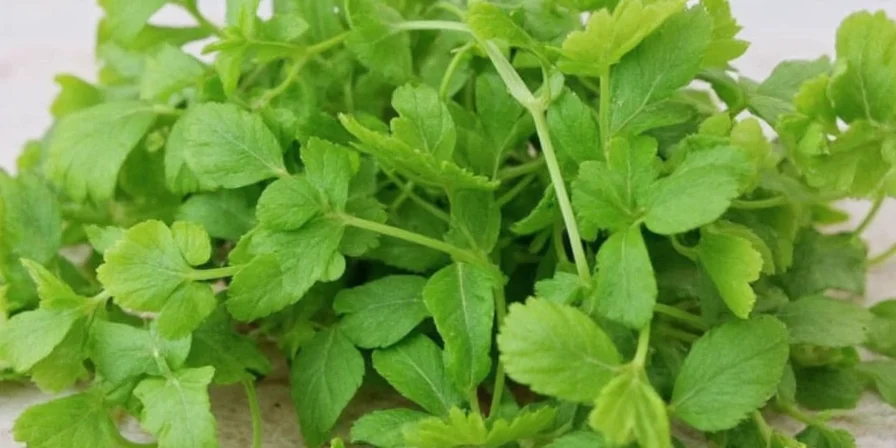Table of Contents
- What is White Coriander? (Simple Answer)
- White vs Regular Coriander: What You Actually Need to Know
- Where to Buy White Coriander (2025 Update)
- 5 Essential White Coriander Tips for Home Cooking
- 3 Beginner-Friendly Recipes Using White Coriander
- How to Store White Coriander Properly
- Advanced Techniques: When You're Ready to Level Up
- Myths vs Facts: Busting Common Misconceptions
- Spice Pairing Guide for Perfect Flavor Balance
- Frequently Asked Questions
What is White Coriander? (Simple Answer)
White coriander is simply immature coriander seeds harvested earlier than regular brown coriander. Unlike the earthy, roasted flavor of mature brown coriander seeds, white coriander offers a brighter, citrus-like taste that works especially well in lighter dishes like fish, chicken, and fresh vegetable recipes. If you've ever wondered why some recipes specifically call for white coriander instead of regular, it's because they need that distinctive fresh, lemony note without the deeper roasted tones.

White vs Regular Coriander: What You Actually Need to Know
The main difference comes down to harvest time and flavor profile. White coriander is harvested about 10-15 days earlier than regular coriander, resulting in a lighter color and more delicate flavor. This isn't just marketing—there's real science behind why your recipes turn out differently depending on which you use.
| Type | Flavor Profile | Best Used In | Substitution Tip |
|---|---|---|---|
| White Coriander | Citrusy, light, floral | Fish, chicken, spring vegetables, light sauces | Use 1:1 ratio, but add lemon zest for brightness |
| Brown Coriander | Earthy, warm, slightly sweet | Curries, stews, roasted meats, hearty dishes | Use 1:1 ratio, but toast first for similar depth |
| Cilantro Leaves | Fresh, herbal, sometimes soapy (genetic) | Garnishes, salsas, fresh sauces | Not interchangeable with seeds |
Where to Buy White Coriander (2025 Update)
Finding white coriander can be tricky since not all stores carry it. Here are your best options:
- Indian/Pakistani grocery stores: Look for "dhania" or "safed dhania" in the spice section (most reliable source)
- Online retailers: Amazon, Spice Jungle, and The Spice House now offer vacuum-sealed white coriander with 2025 freshness dates
- Local spice shops: Ask for "immature coriander" or "fresh coriander seeds"
- What to avoid: Don't buy "bleached" coriander—true white coriander is naturally pale beige, not pure white

5 Essential White Coriander Tips for Home Cooking
- Toast gently: Heat in dry pan for 60-90 seconds over medium-low heat until fragrant. Don't over-toast or it loses its delicate flavor.
- Grind fresh: For best results, grind just before using. Pre-ground loses flavor quickly.
- Use in light dishes: Try it in fish curries, chicken salad dressings, or roasted spring vegetables.
- Add late in cooking: Unlike brown coriander, add white coriander in the last 10-15 minutes of cooking to preserve its bright flavor.
- Pair with citrus: White coriander works especially well with lemon, lime, or orange zest to enhance its natural citrus notes.

3 Beginner-Friendly Recipes Using White Coriander
1. Lemon Herb Chicken with White Coriander
Grind 1 tbsp white coriander with 1 tsp lemon zest, 1 minced garlic clove, and 1/2 tsp salt. Rub on chicken breasts and bake at 375°F for 25-30 minutes. The white coriander creates a bright, clean flavor that brown coriander would make too earthy.
2. White Coriander Fish Tacos
Mix 2 tsp ground white coriander with 1/2 cup Greek yogurt, lime juice, and chopped cilantro. Use as sauce for grilled fish tacos. The white coriander provides subtle background notes without overpowering the fish.
3. Spring Vegetable Stir-fry
Toast 1 tsp white coriander seeds, then crush and add to stir-fry during the last 5 minutes of cooking. Works especially well with asparagus, snap peas, and baby carrots.
How to Store White Coriander Properly
White coriander loses flavor faster than brown coriander because of its higher oil content. Follow these storage tips:
- Keep whole seeds in an airtight container away from light and heat
- Use within 6 months for best flavor (vs 12 months for brown coriander)
- Never store in the refrigerator—moisture causes flavor loss
- Freeze whole seeds for up to 1 year (thaw before grinding)
Advanced Techniques: When You're Ready to Level Up
Once you've mastered the basics, try these professional techniques:
- Precise Toasting: Heat seeds at 150°C (302°F) for 90 seconds. Exceeding 160°C triggers flavor degradation.
- Sequential Addition: Add 70% at the beginning of cooking, 30% in the final 15 minutes for layered flavor.
- Oil Infusion: Steep 2 tsp seeds in 60ml neutral oil at 80°C for 20 minutes before using as cooking base.
- Brine Optimization: Use 1:4 ratio of ground coriander to salt in dry brines for improved moisture retention.
- Acid Balancing: When using in pickling, reduce vinegar by 15% to prevent flavor reactions.
- Dessert Timing: Add to baked goods during creaming stage, not with dry ingredients.
- Freshness Testing: Rub seeds between fingers—fresh seeds release immediate citrus aroma detectable at 30cm distance.

Myths vs Facts: Busting Common Misconceptions
Let's clear up the most common misunderstandings about white coriander:
| Myth | Reality | What This Means for Your Cooking |
|---|---|---|
| "White coriander is just bleached regular coriander" | White coriander is harvested earlier, not chemically treated | Don't waste money on "bleached" products—they lack authentic flavor |
| "All coriander is interchangeable" | Harvest timing creates distinct flavor profiles | Using brown coriander in fish dishes creates unwanted earthiness |
| "Coriander and cumin are similar" | They have different chemical compositions and flavor roles | White coriander brightens dishes while cumin adds depth |
Spice Pairing Guide for Perfect Flavor Balance
White coriander plays well with certain spices while clashing with others:
- Perfect Pairings: Lemon zest, mint, cardamom, fennel seeds (creates bright, clean flavor profiles)
- Use Sparingly With: Cumin, turmeric, garlic (balances earthiness without overpowering)
- Avoid Combining With: Smoked paprika, chipotle, strong curry blends (overwhelms delicate flavor)
For best results, use white coriander in dishes where you want a subtle citrus note rather than dominant spice flavor.

Frequently Asked Questions
FAQ
What's the difference between white coriander and regular coriander?
White coriander is harvested earlier (25-30 days after flowering) than regular brown coriander (40+ days). This results in higher linalool content (60-75% vs 45-60% in brown), creating a brighter, more citrusy flavor profile ideal for lighter dishes.
Can I substitute regular coriander for white coriander?
Yes, but with adjustments. Use 1:1 ratio of brown coriander but add 1/2 tsp lemon zest per teaspoon to mimic white coriander's brightness. For best results, toast brown coriander very lightly (30-45 seconds) to preserve some delicate notes.
Why does my white coriander taste bitter?
Bitterness occurs when seeds exceed 160°C during toasting or are added to oil above smoking point. Toast at 150°C maximum and add to cooling oil (below 120°C) before other spices. Fresh seeds shouldn't taste bitter when used correctly.
How can I tell if white coriander is fresh?
Perform the crush test: rub 5 seeds between fingers. Fresh seeds release immediate citrus aroma detectable at 30cm distance. Stale seeds require direct nose contact and smell dusty. Optimal seeds show no visible oil residue after crushing.
What dishes work best with white coriander?
White coriander shines in lighter dishes: fish curries, chicken salad dressings, spring vegetable preparations, and fresh vegetable stir-fries. It's ideal for recipes where you want subtle citrus notes without the earthiness of brown coriander. Avoid using in heavy stews or strongly spiced dishes.











 浙公网安备
33010002000092号
浙公网安备
33010002000092号 浙B2-20120091-4
浙B2-20120091-4